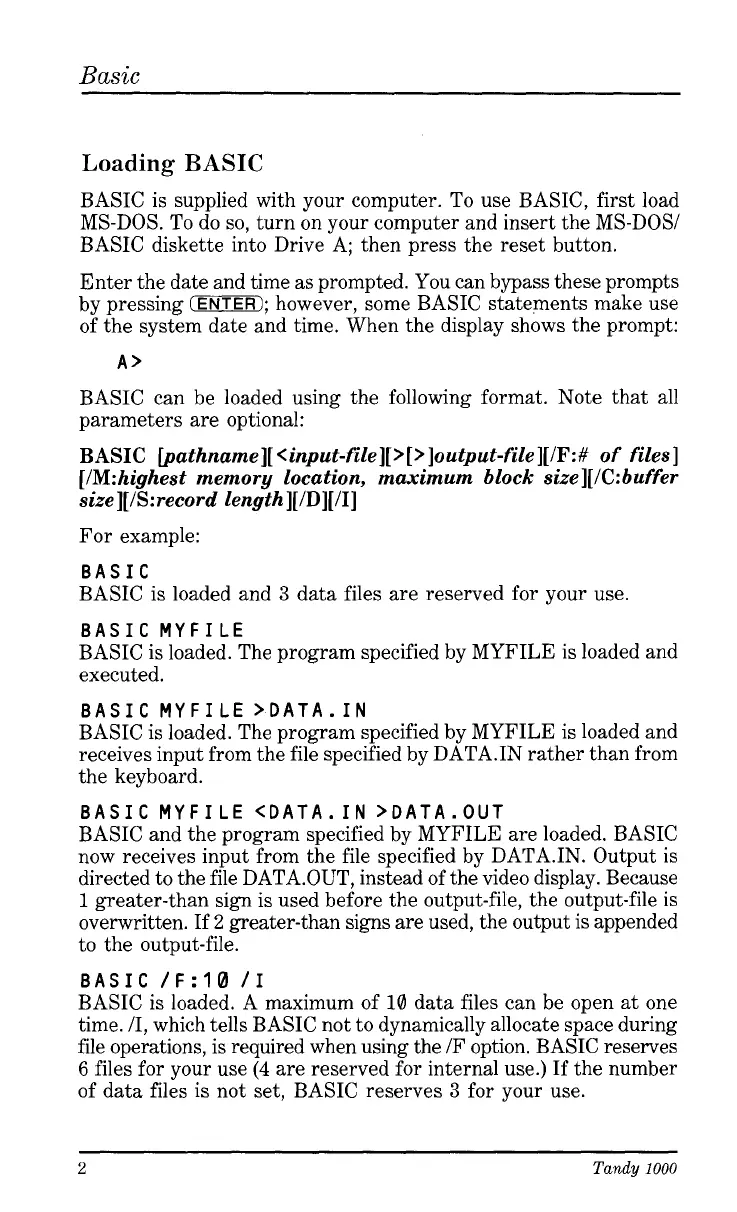Basic
Loading
BASIC
BASIC is supplied with your computer. To use BASIC, first load
MS-DOS. To do
so,
turn on your computer and insert the MS-DOS/
BASIC diskette into Drive A; then press the reset button.
Enter the date and time
as
prompted. You can bypass these prompts
by pressing
(ENTER);
however, some BASIC statements make use
of the system date and time. When the display shows the prompt:
A>
BASIC can be loaded using the following format. Note that
all
parameters are optional:
BASIC [pathname][ <input-fiZe][
>
[
>
loutput-file][/F:# of files]
[lM:highest memory location, maximum block size][/C:buffer
size][/S:record Zength][/D][/I]
For example:
BASIC
BASIC is loaded and
3
data files are reserved for your use.
BASIC
MYFILE
BASIC is loaded. The program specified by MYFILE is loaded and
executed.
BASIC
MYFILE
>DATA.IN
BASIC is loaded. The program specified by MYFILE is loaded and
receives input from the file specified by DATA.IN rather than from
the keyboard.
BASIC
MYFILE
<DATA.IN >DATA.OUT
BASIC and the program specified by MYFILE are loaded. BASIC
now receives input from the file specified by DATA.IN. Output is
directed to the file DATA.OUT, instead of the video display. Because
1
greater-than sign is used before the output-file, the output-file
is
overwritten.
If
2
greater-than signs are used, the output is appended
to the output-file.
BASIC
/F:18
/I
BASIC is loaded. A maximum of
10
data files can be open
at
one
time.
/I,
which tells BASIC not to dynamically allocate space during
file operations, is required when using the
/F
option. BASIC reserves
6
files for your use
(4
are reserved for internal use.) If the number
of data files is not set, BASIC reserves
3
for your use.
2
Tandy
1000
